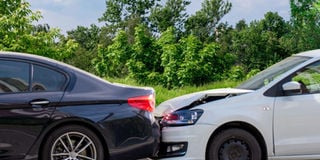Ask the mechanic: What affects braking distance?

What factors affect car braking distance?
Victoria
Hello Victoria, braking distance is how far a vehicle travels from when its driver applies the brakes to the point where it stops completely. Braking distance is an important safety concern as it explains how much time and space a driver has to safely stop his vehicle.
Braking distance should address a driver's reaction time or how far the car travels from when the driver realises the need to brake and when the actual braking happens. Braking distance should also consider how far a car travels from the point when brakes are applied to when it completely stops.
Several factors affect car braking distance. The most outstanding include how fast you are travelling, the condition of the road surface, the condition of your car tyres, the quality and type of brakes, how you brake, weight of the vehicle, altitude and weather conditions, maintenance and vehicle design.
Speed
Speed or how fast you drive plays a big role in determining how long it takes to stop the car when you brake. The faster the car drives, the longer the braking distance. The condition of the road surface is crucial in determining braking distance. If the road is slippery due to loose gravel, water pools or wet mud, a car's braking distance will be longer.
The condition of car tyres plays a role in determining braking distance. Worn-out tyre treads or under-inflated tyres increase braking distance as they are not able to generate enough friction with the slippery or wet road surface to slow the car sooner. Brake pad condition, type of brakes and how you brake can increase your braking distance. Worn-out brake pads cause reduced braking effect while the brake pads design dries faster than the brake disc design when you drive on wet roads or pools of water. These will slow the car sooner.
Aggressive jackrabbit or sudden braking will increase stopping distance. How heavy your vehicle also counts in determining braking distance. Generally, heavy vehicles take longer to brake or slow down to a complete stop. The altitude or how high you are uphill or the gradient of the road where you are driving downhill will increase your braking distance. This situation is complicated further if you are driving fast with worn-out tyres on a rainy day.
The mechanical condition of the car also increases braking distance. If your brake pads are worn out, brake fluid aged and mixed with moisture or Anti anti-lock braking system is faulty, your car braking distance will become longer. The above factors or a combination of them affect your car's braking distance.









0 Comments